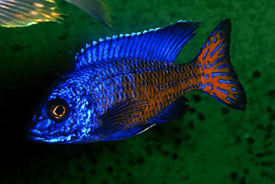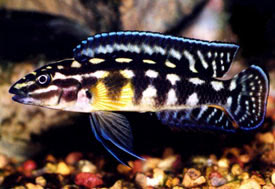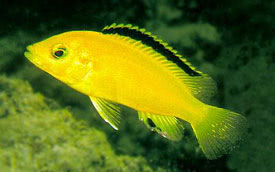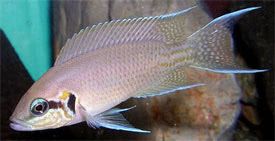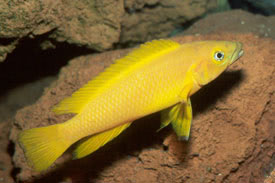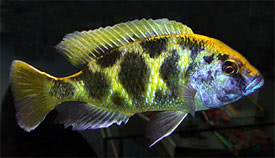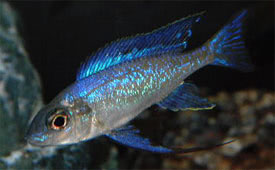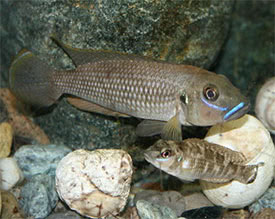
 Magyarul / Hungarian
Magyarul / Hungarian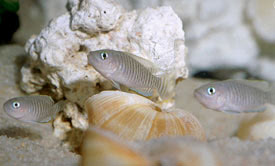
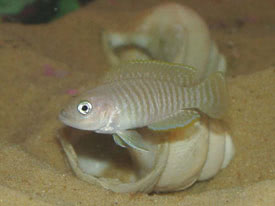

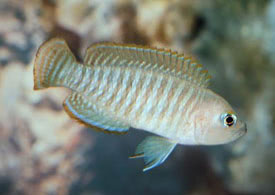
- Scientific name: Neolamprologus multifasciatus
- Common name: Many Banded Shell-Dweller
- Group: Cichlids
- Habitat: Africa; Lake Tanganyika
- Size: 4 cm (the smallest known cichlid).
- Biotope: Olyan zónák, ahol bőségesen vannak üres csigaházak.
- Social behavior: They forming a small colony.
- Diet: Feed them with plankton flakes and Tetra Cichlid Flakes. Adults also enjoy eating baby brine shrimp and delight in chasing the tiny crustacea.
- Breeding: Easy
- Tank: Minimum 40 litres
- Population: 10-12 fish for 40 litres
- Decoration: Sand substrate (or very fine gravel), and lots of shells. A few small rocks can be added in the background.
- Temperature: 25-26°C
- pH: 7,5-9
- Hardness: 8-25 NK°
- Lifespan: 5-8 years
Neolamprologus multifasciatus is easy to maintain and thrives in small tanks. I kept and bred six individuals in a three-gallon Eclipse tank with no problems, but a ten gallon tank would probably have been a better choice. Provide a sand substrate or very fine gravel and snail shells (for an alternative to shells, see Breeding below). You can use snail shells that are packed for serving escargot (gourmet section of the supermarket) or the empty shell of the Gold Mystery Snail. Set your heater to 78-80F and you should have excellent results. Regular partial water changes are important to the health of all cichlids. Neolamprologus multifasciatus is is sensitive to changes in temperature and chemistry. Take some extra care with your make-up water to avoid problems. Neolamprologus multifasciatus are prolific diggers and will quickly landscape their tank, partially burying the entrance to their shells. This behavior is completely normal and sometimes signals the onset of breeding.
Neolamprologus multifasciatus is a harem spawner. A male will spawn with several females within his territory. Additionally, Neolamprologus multifasciatus are "step breeders" with multiple generations of fry existing in the same territory. One challenge in breeding this fish is removing fish from the tank. Both the adults and fry will quickly dart into shells avoiding capture. For the aquarist trying to breed for BAP or profit, I recommend using 1/2" PVC elbows with caps instead of shells. The fish do just fine in the PVC and harvesting is easy; just remove the PVC elbow from the tank into a small container filled with tank water and remove the cap. The adults and fry will swim right out. For best success, start out with 1 male and four or five females. If the fish are too small to sex, start with six juveniles. Provide a sandy bottom and 3-4 extra "shells" scattered about the bottom of the tank. Neolamprologus multifasciatus is a secretive spawner and it is unlikely you will see the deed take place. Generally, your first clue that a spawn has taken place is the appearance of tiny fry that hover near the entrance to the "shells". As soon as you see fry, you should begin feeding newly hatched baby brine shrimp. You can switch the fry to crused flake food in about two weeks.





